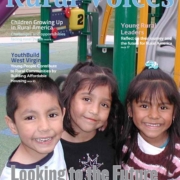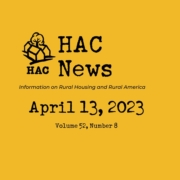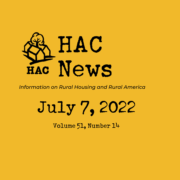Discussion Paper, Adaptation
CHANGE OR DIE? ADAPTATION FOR SURVIVAL
 Continue the Discussionby Lenora Jarvis-Mackey, River City Community Development Corporation, NC
Continue the Discussionby Lenora Jarvis-Mackey, River City Community Development Corporation, NC
Background
In these tough economic times, rural housing nonprofits cannot simply continue to do what we have done in the past and hope things will get better. Nonprofit organizations, like for-profit companies, are facing a rapidly changing environment. Funders want more for less and private organizations are competing on what was traditionally seen as nonprofit territory. Sustainability is a constant worry.
Historically, nonprofits gauged our success by keeping good records on the number of people we served; the impact on poverty reduction; facilitating or building safe decent and affordable housing; and our advocacy for clean water, sanitary sewer, the provision of livable wage jobs and many other issues not properly addressed by the private sector or by state and federal government agencies. In today’s environment, however, cataloguing success is not enough to ensure continued funding for a nonprofit. Funders are more selective. Track records are important but are not ultimately determinative to long term funding and survival of a nonprofit.
Even with positive track records, nonprofits must remain keenly aware of the need for continued innovation and creativity to sustain our business models and to continue to provide services for our beneficiaries. “Operating like a nonprofit” has somehow evolved into a perception of being overworked, underfunded, and tax exempt. To stay alive and relevant we must operate more like traditional businesses and become more quantumly responsible to survive.
Harold Barnes, president of the Center for Quantum Leadership, defines “quantum responsibility in business” as:
The active process of the business, the leadership and employees holding themselves accountable to each other for the direction and success of the organization. This accountability will lead to the exponential positive growth of the organization and will encourage and facilitate innovation, creativity and productivity such that all segments of the organization will have the opportunity and tools to make a significant leap forward.
Issues and Challenges
Ensuring nonprofit survival and ongoing viability presents an array of issues and challenges. To keep nonprofits functional, nonprofit leaders must appreciate and value the best of what is, as well as envisioning what might be and how to get there. We must read the signs that predict imminent changes in economic trends and make decisions before circumstances are out of control. Useful techniques may come from many sources, including for-profit entities.
Discussion Questions
- When and how often should we evaluate our organizations?
- How do we systematically discover what gives life to a nonprofit?
- When is a nonprofit most alive, most effective, and most constructively capable of serving its customers?
- How can nonprofits best innovate, adapt, and create the kinds of organizations that are sustainable into the future?
- How do we go about implementation of quantum responsibility?



